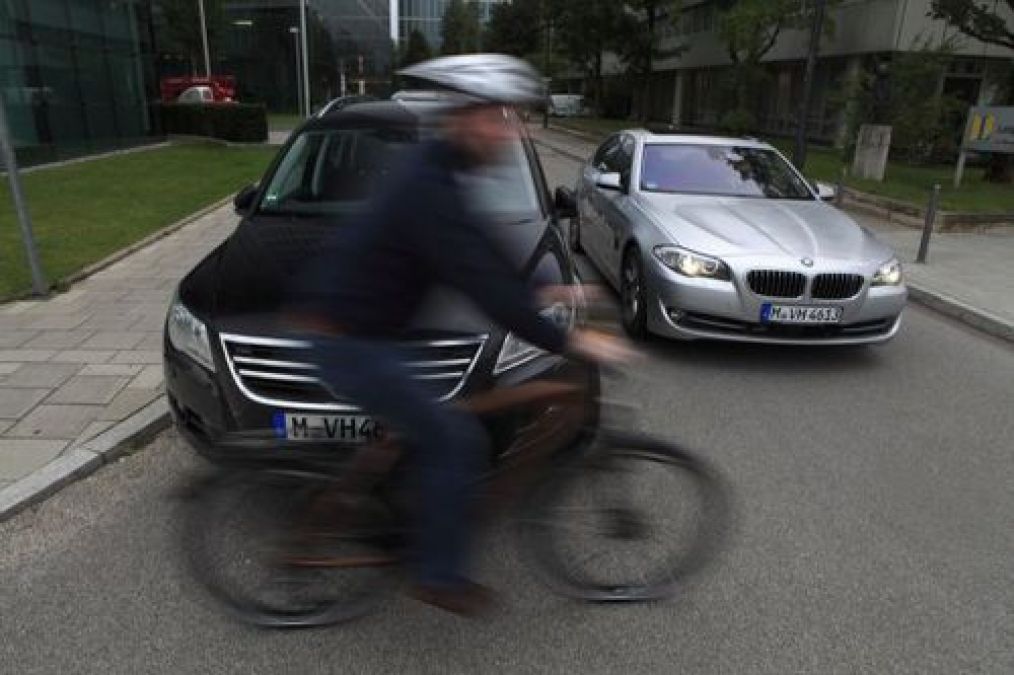Most of the automakers are recognizing that growing urbanization will challenge business-as-usual in the automobile industry. BMW has launched the UR:BAN research initiative looking at driver assist and traffic management technology, to help drivers navigate dense urban streets and ease the traffic load.
The promise the automakers sold to previous generations was "unrestricted freedom of personal mobility" and as a result those generations of city planners built the highway systems necessary for automobiles to implement unrestricted personal mobility. In the years since the highway systems, instead of offering freedom, are more like a jail trapping drivers in traffic jams for miles on end, with the risk of collisions at the slightest driving mistake.
In BMW's mind, "traffic and transport systems must find a way to cope with these strains" so that drivers can safely navigate their way through an increasingly urbanized highway system as safely, efficiently and comfortably as possible.
The UR:BAN project, a German acronym meaning “Urban space: user-oriented assistance systems and network management”, involves 30 partners, comprising automotive manufacturers and suppliers, electronics, communication technology and software companies, universities, research institutes and cities, researching three things: “Cognitive Assistance”, “Networked Traffic System” and “The Human Element in Traffic”.
“Cognitive Assistance”: Driving in dense urban settings means managing a lot of information, the most critical of which is seeing and interacting with pedestrians and bicyclists. Urban settings are a great place for both walking and bicycling, making for a large number of people traveling in those modes, often at close quarters with cars.
A Cognitive Assistance sub-project “Protection of Vulnerable Road Users” uses a variety of sensors or cameras to scan the surroundings, detect pedestrians and bicyclists, to avoid bumping into them. A vehicle-pedestrian accident can then be prevented by braking and/or steering.
“With the help of high-resolution sensor systems capable of scanning large areas of the driving environment, our aim is to make drivers aware of hazards in good time and to help them respond safely with the goal of reducing the number and severity of accidents in urban driving situations,” says Dr Peter Zahn, UR:BAN Project Manager at BMW Forschung und Technik GmbH.
“Networked Traffic System”: This project is focused on using computer technology, in a form of cloud computing, to help manage traffic flow to optimize energy efficiency and travel time. Any time an internal combustion engine vehicles is stopped at a traffic light, whether due to traffic congestion or not, it is wasting fuel because ICE's must idle. Electric cars do not waste fuel in these circumstances because their drive train does not have to idle. However, in both cases there is a large waste of time and transportation agencies recognize the loss of potential productivity due to time wasted driving in heavy stop-and-go traffic.
“Applications for intelligent management of traffic, taking into account both the traffic situation and the potential for improving environmental performance, will work hand in hand with intelligent driver assistance systems to optimise driving efficiency and energy consumption,” says Susanne Breitenberger, UR:BAN Project Manager BMW AG.
A Networked Traffic System sub-project named “Smart Road” are developing a green wave/traffic light approach assistance system using information about traffic light phasing and traffic situations at intersections to improve energy efficiency.
Similar research is underway in Ann Arbor MI in the Connected Cars research being organized in that city by the National Highway Transportation Safety Administration (NHTSA).
“The Human Element in Traffic”: This project is looking at retaining the driver as the human controlling the machine, keeping the machine as an "active helper". In other words, BMW's vision is not robocars or other form of automated driving, where the car does everything and the driver is relegated to the passenger role. Instead the control system will be designed to actively assist the driver in performing traffic maneuvers, achieving a synthesis between safety, efficiency and comfort.
The Human Element in Traffic sub-project named “Controllability” is assessing the benefits of fast-responding computerized systems, designed to provide assistance in avoiding accidents, while keeping the vehicle controllable for the driver at all times.
In another sub-project, named “Behaviour Prediction/Intention Detection”, are developing methods to identify the intentions of the vehicle driver, and other drivers, at the earliest possible stage, using this data in the vehicle’s response to the traffic around it.
The age of the automobile has been successful at reshaping urban areas, but successful adoption of cars as a mode of transportation has left us stuck in traffic inching along. Research of this sort may convert urban driving into a more efficient less stressful process. Automakers see this sort of research as a means to corporate survival, as urbanites look to other modes of transportation. An example is the growth of car sharing organizations, and BMW just expanded its DriveNow car sharing program to the U.S. with a fleet of BMW ActiveE's in the San Francisco Bay Area. Automakers may find their products squeezed out of urban areas unless they reinvent the role of automobiles in society.





